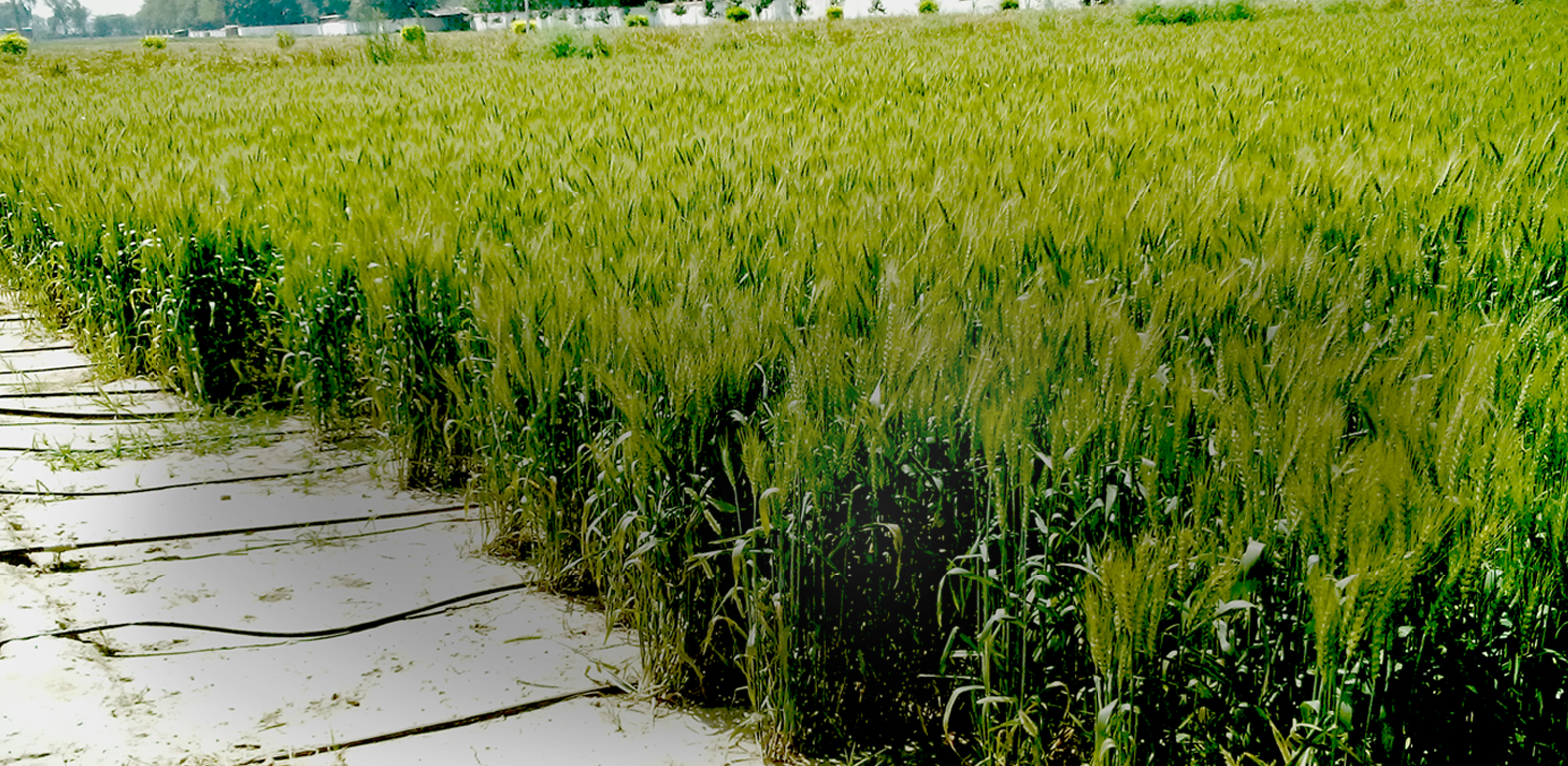Welcome to Jain Irrigation Systems Ltd.

Blog at Jains - HOW MUCH WATER DOES MY CROP NEED? Part 5. Wheat
Wheat is one of the most primitive plants that was domesticated as food crops, some 8000 years ago. It is the major staple crop for most part of the world; Europe, West Asia, South East Asia, Americas and North Africa. Wheat occupies the largest acreage under cultivation and leads all other food crops-rice, maize and potato.
Wheat is grown from sea level to 4570 m MSL, from 30 to 60 degree N and 27 to 40 degree S latitudes. It grows best at an average temperature of 25 0C; minimum 3-4 0C and Maximum 30-32 0C.
Globally, wheat is cultivated either as spring wheat (in very cold winter locations with below freezing conditions as in Europe) and winter wheat, (where winters are mild as in India, North Africa and Middle East).
In India Wheat is grown in very diverse ecologies;
Northern Hills Zone (NHZ), Western Himalayan regions of J&K ,Himachal Pradesh ,Uttaranchal ,Sikkim and hills of West Bengal and N.E. States. This Zone has Wheat growing area of 0.8 m ha which is predominantly rainfed. Av. productivity of wheat in this zone is 1.6 t/ha. The major constraints in wheat production in this zone is water stress.
North Western Plain Zone (NWPZ) Punjab, Haryana, Delhi, Rajasthan and Western U.P, Tarai region of Uttaranchal. This zone has wheat growing area of about 9.5 million hectares. The average productivity of wheat in this zone is 3.9 t/ha.
North Eastern Plain Zone (NEPZ) Eastern Uttar Pradesh, Bihar, Jharkhand, West Bengal, Orissa, Assam, Sikkim and plains of far eastern states under irrigated conditions. This zone has wheat growing area of about 9.5 million hectares and average productivity of wheat in this zone is 2.5. t/ha.
Central Zone (CZ) Gujarat, Madhya Pradesh, Chhattisgarh, Jhansi division of UP and Kota and Udaipur Rajasthan. This zone has wheat growing area of about 4.5 million hectares and average productivity of wheat in this zone is 2.4 t/ha. Peninsular Zone (PZ) Maharashtra, Andhra Pradesh, Karnataka, Goa and plains of Tamil Nadu. This zone has wheat growing area of about 1.5 million hectares and average productivity of wheat in this zone is 2.9 t/ha.
Southern Hills Zone (SHZ) Hills of Tamil Nadu and Kerala comprising the Nilgiri and Palni hills of southern plateau. This zone has wheat growing area of about 0.2 million hectares and average productivity of wheat in this zone is 1.0 t/ha.
Water Need of Wheat
Estimate of water use by the wheat crop is becoming a necessity now as the water availability is shrinking. Growers are also looking for opportunities to improve water productivity, by conserving water or reducing its consumption. At this point one started asking "How much water does my crop need ?
Where does all the water go after one irrigates a crop field? Water moves out of the field in 7 different ways after an irrigation that floods the field: 1.Direct evaporation from the water surface, 2. Drift of water away from the field due to wind, 3. Transpiration through the body of the crop plant (Mainly thru leaves), 4. Evaporation from the wet ground exposed to the atmosphere, 5. Run off of water from the field, 6. Infiltration to lower soil strata and 7. Deep percolation to far deep soil profile.
Among these, the essential components of crop water use are only two: transpiration and soil surface evaporation. Hence water use by crop is referred to as ETP, Evapotranspiration. As the crop grows the surface evaporation gets reduced and when the soil surface is fully covered by the canopy (leaf and leaf bearing branches of the crop) there is only one dominant component of crop water use: Transpiration.
In precision irrigation, the water given should only be equivalent to ETP. The goal of perfect irrigation is to reduce the second component of water loss, surface evaporation. In conventional irrigation major part of water loss are in fact the rest of the 7 listed above.
When a farmer asks the question, HOW MUCH WATER DOES MY CROP NEED? The answer is the ETP (evaporation plus transpiration). Accordingly I have estimated the water required for a good high productive wheat crop. The difference among the regions is due to difference in evaporation rate during the growing season of the crop.
How Much water I need for Wheat crop?
| Table Water Requirement of Wheat crop | WR mm |
m3/h a |
| North India Wheat growing area - Western UP | 376.00 | 3760 |
| North India Wheat growing area - South Punjab/North Haryana | 333.40 | 3334 |
| Central dry Plain region Indore (MP) | 273.10 | 2731 |
Precision Irrigation in wheat is maintained by drip method of irrigation. In conventional method water is applied till the field/or field channels are filled up. In many fields in Haryana and Punjab one can see wheat crop standing in flood water due to excess irrigation water. A major portion of this applied water moves away from the field. Though there are very vague recommendations 7 or 8 irrigations of average 6 cm each in Punjab and 6 cm x 4-5 irrigations in Haryana for conventional irrigation application, farmers usually apply up to 10 cm or more per irrigation and irrigate up to 8 times during the season. Thus a large volume of water is actually wasted every time the field is irrigated resulting in very low water use efficiency and water productivity of wheat.
For a 4 month period, Wheat requires only 2731 m3 to 3760m3 water per hectare to produce 5.9 to 6.64 t/ha yield under drip -fertigation assisted precision farming. Applying water as per the estimates above is possible only through drip method of irrigation. In conventional irrigation system the whole season (4 months) consumes 8000 m3 on an average considering the way farmers apply irrigation water and the productivity of ranged from 4.5 to 5.1 t/ha.


